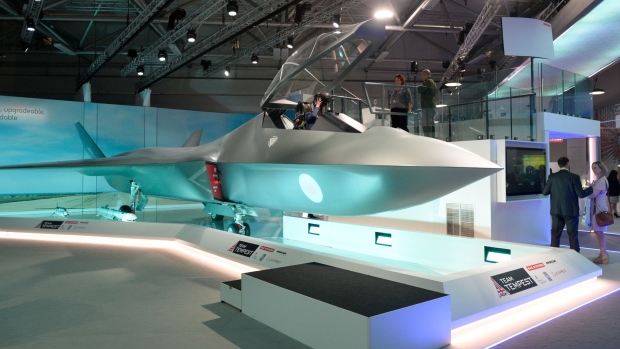Jul 15, 2020
Britain’s Next Fighter Jet Could Be Propelled by Batteries
, Bloomberg News

(Bloomberg) -- BAE Systems Plc, the developer of Britain’s next fighter jet, said it’s considering powering the planned warplane using alternative propulsion such as hybrid and fully electric systems.
BAE, which is working with engine-maker Rolls-Royce Holdings Plc and others, is “examining all options” to power the plane, manufacturing director Dave Holmes said on a webcast Wednesday. The Tempest is due to join the Royal Air Force fleet from 2035.
“I wouldn’t rule anything out,” he said. “If you’re looking at something that’s going to be in service out to 2050 to 2060 and beyond, all of those options are very feasible.”
Electric flight is still in its infancy. One of the biggest challenges remains the weight of the batteries required to power an aircraft, which will mean getting much larger planes into the air. Rolls-Royce developed a hybrid-electric aircraft concept called E-Fan X with European planemaker Airbus SE, but the project was suspended this year as the coronavirus pandemic weighed on the sector.
BAE envisions using newer manufacturing techniques such as 3D printing on the Tempest. It said Wednesday it will also work with Williams Advanced Engineering to apply battery-management and cooling technologies used in Formula E race cars to combat aircraft. The company, part of Formula 1 supplier Williams Grand Prix Holdings Plc, aims to deliver energy to the jet at lighter weights, according to its technical director, Paul McNamara.
Airbus is working on a rival to the British Tempest project with Dassault Aviation SA. The European planemaker has said its next narrow-body commercial aircraft, also targeted for the mid-2030s, will be powered by alternative means.
BAE said it wasn’t focused on the competition but on meeting its own goals, and continues active discussions with potential partners on the project.
©2020 Bloomberg L.P.





